|
|
|
 |
 |
 |
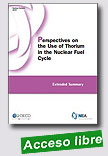 |
Perspectives on the Use of Thorium in the Nuclear Fuel Cycle – Extended Summary
Nuclear Energy Agency, 09/10/15, 23 p.
Since the beginning of the nuclear era, thorium has been acknowledged as an interesting resource for its potential use as nuclear fuel. In the early period of nuclear energy, thorium had been considered as a possible supplement or even a replacement for uranium which was feared to be scarce at the time. Thorium is in all likelihood relatively abundant on earth and presents a number of intrinsic nuclear and chemical
|
properties that would make its use as a potential nuclear fuel particularly interesting. However, in the early years of nuclear energy, it was soon discovered that the supply of natural uranium was not as limited as initially projected. Moreover, thorium lacks a fissionable isotope – a major drawback for thorium, as it is impossible to start a fission chain reaction purely on natural thorium – and consequently any nuclear system using thorium would initially be dependent on prior generation of fissile matter (extracted from uranium or bred in uranium systems). A uranium-plutonium fuel cycle was therefore not only an easier but a necessary first step, in line with the strategies of the main countries developing nuclear energy at the time.
Extensive reviews of thorium use in nuclear reactors have been published in the
literature over the years. From 1950 to the late 1970s, the thorium fuel cycle was the subject of numerous studies and pilot experiments. Power reactors were operated with thorium-based fuels, demonstrating the feasibility as well as the complexities associated with their use.
In the late 1970s and 1980s, public support for nuclear power declined after the Three Mile Island accident in April 1979 and the Chernobyl accident seven years later in 1986. In conjunction with these events, the price of uranium fell to very low levels in the 1980s and thus the search for an alternative to uranium became economically of little interest.
Extraído de: https://www.oecd-nea.org/science/pubs/2015/7228-thorium-es.pd
|
 |
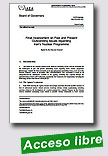 |
Final Assessment on Past and Present Outstanding Issues Regarding Iran’s Nuclear Programme
IAEA, 2 December 2015, 16 p.
This report by the Director General to the Board of Governors, in line with the Road-map for the clarification of past and present outstanding issues regarding Iran’s nuclear programme (Road-map), includes the final assessment of all past and present outstanding issues, as set out in the Director General’s report in November 2011 (GOV/2011/65).
This assessment is based on all safeguards-relevant |
information available to the Agency, including that acquired through the implementation of Iran’s NPT Safeguards Agreement, the Framework for Cooperation, including the Road-map, and the Joint Plan of Action (JPA).
Extraído de: https://www.iaea.org/sites/default/files/gov-2015-68.pdf
|
 |
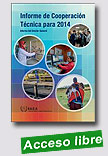 |
Informe de Cooperación Técnica para 2014
OIEA, Junio 2015, 121 p.
El Informe de Cooperación Técnica para 2014 consta de tres partes: A — Fortalecimiento de las actividades de cooperación técnica del Organismo; B — Recursos y ejecución del programa de CT; y C — Actividades y logros del programa en 2014: Reseña regional. En el anexo 1 se proporcionan ejemplos de actividades y logros de proyectos en esferas temáticas específicas, y en el anexo 2 se describen las actividades del Programa de Acción para la Terapia contra el
|
Cáncer. En el anexo 3 se presentan las esferas de actividad del programa de CT, agrupadas para los fines de la presentación de información.
Extraído de: https://www.iaea.org/About/Policy/GC/GC59/GC59InfDocuments/
Spanish/gc59inf-3_sp.pdf
|
 |
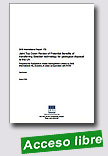 |
The Nuclear Decommissioning Authority (NDA), through Radioactive Waste Management (RWM), is responsible for implementing UK Government policy for long-term management of higher activity radioactive wastes. Radioactive Waste Management Limited (RWM) in the UK is considering how it could further enhance confidence, and potentially reduce costs and timescales of implementation of a Geological
|
Disposal Facility (GDF) by the transfer of technology from overseas programmes that are more advanced. As a first step, it has entered into discussions with SKB who submitted in March 2011 licence applications for an encapsulation facility and a geological disposal facility in Sweden. RWM is also considering technology transfer with other organisations who are planning to implement disposal facilities in other geological settings. However, the advanced state of SKB’s programme makes it an appropriate starting point for quantifying the potential benefits of technology transfer. RWM commissioned this study as part of an ongoing policy commitment to build upon international progress and experience with geological disposal programmes.
Extraído de: http://www.nda.gov.uk/publication/joint-top-down-review-of-potential-benefits-of-transferring-swedish-technology-for-geological-disposal-to-the-uk/ |
 |
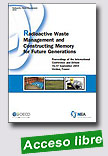 |
Radioactive Waste Management and Constructing Memory for Future Generations
Nuclear Energy Agency, 18/11/15, 177 p.
The Preservation of Records, Knowledge and Memory (RK&M) across Generations initiative was launched by the Nuclear Energy Agency in 2011 to foster international reflection and progress towards this goal and to meet increasing demands by waste management specialists and other interested parties for viable and shared strategies. The RK&M initiative is now in its second phase, which is to last until 2017. Phase I
|
culminated on 15-17 September 2014 with the organisation of an international conference and debate on “Constructing Memory" held in Verdun, France.
The conference was attended by approximately 200 participants from 17 countries and 3 international organisations. Participants included specialists from the radioactive waste management area and beyond, academics in the fields of archaeology, communications, cultural heritage, geography and history, as well as artists, archivists, representatives from local heritage societies and from communities that could host a radioactive waste repository.
Extraído de: http://www.oecdnea.org/tools/publication?query=&div=
&lang=&period=6m&sort=title&filter=1#p7259 |
 |
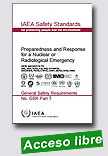
|
Preparedness and Response for a Nuclear or Radiological Emergency - General Safety Requirements
IAEA Safety Standards Series, 2015, 102 p.
This publication, jointly sponsored by the FAO, IAEA, ICAO, ILO, IMO, INTERPOL, OECD/NEA, PAHO, CTBTO, UNEP, OCHA, WHO and WMO, is the new edition establishing the requirements for preparedness and response for a nuclear or radiological emergency which takes into account the latest experience and developments in the area. It supersedes the previous edition of the safety requirements for emergency |
preparedness and response, Safety Standards Series No. GS-R-2, which was published in 2002. This publication establishes the requirements for ensuring an adequate level of preparedness and response for a nuclear or radiological emergency, irrespective of its cause. These safety requirements are intended to be used by governments, emergency response organizations, other authorities at the local, regional and national levels, operating organizations and the regulatory body as well as by relevant international organizations at the international level.
Extraído de: http://www-pub.iaea.org/books/IAEABooks/10905/Preparedness-and-Response-for-a-Nuclear-or-Radiological-Emergency
|
 |
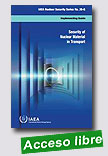 |
Security of Nuclear Material in Transport - Implementing Guide
IAEA Nuclear Security Series, 2015, 104 p.
This publication provides guidance to States and their competent authorities on how to implement and maintain a physical protection regime for transport of nuclear material. It will also be useful to shippers or carriers in the design and implementation of their physical protection systems.
|
Extraído de: http://www-pub.iaea.org/books/IAEABooks/10792/Security-of-Nuclear-Material-in-Transpor
|
 |
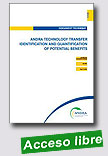 |
Andra Technology Transfer Identification and Quantification of Potential Benefits
Nuclear Decommissioning Authority (NDA - UK), 13 July 2015, 101 p.
The Nuclear Decommissioning Authority (NDA), through Radioactive Waste Management (RWM), is responsible for implementing UK Government policy for long-term management of higher activity radioactive wastes. In order to enhance confidence, and potentially to reduce costs, timescales and project risks associated with the development
|
of the UK’s Geological Disposal Facility (GDF) programme, RWM is investigating the transfer of technologies from more advanced overseas programmes. A special interest has been defined for the French Andra Cigéo’s GDF project, which entered its industrial design phase in 2012. This report presents the results of the analysis conducted by Andra and RWM on the potential benefits that can be expected from a technology transfer of some achievements of the French programme. RWM commissioned this study as part of an ongoing policy commitment to build upon international progress and experience with geological disposal programmes.
Extraído de: http://www.nda.gov.uk/publication/andra-technology-transfer-identification-and-quantification-of-potential-benefits/
|
 |
|
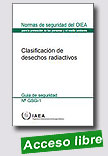
|
Clasificación de desechos radiactivos
Colección de Normas de Seguridad del OIEA, 2015, 50 p.
This publication is a revision of an earlier Safety Guide of the same title issued in 1994. It recommends revised waste management strategies that reflect changes in practices and approaches since then. It sets out a classification system for the management of waste prior to disposal and for disposal, driven by long term safety considerations. It includes a number of schemes for classifying radioactive waste that can be used to assist with planning overall national approaches to
|
radioactive waste management and to assist with operational management at facilities.
Extraído de: http://www-pub.iaea.org/books/IAEABooks/8908/Classification-of-Radioactive-Waste
|
| |
| |
|
|
| |
| |
|
|
| |
| |
|
|
| |
| |
|
|
| |
|
|
|
|
|
